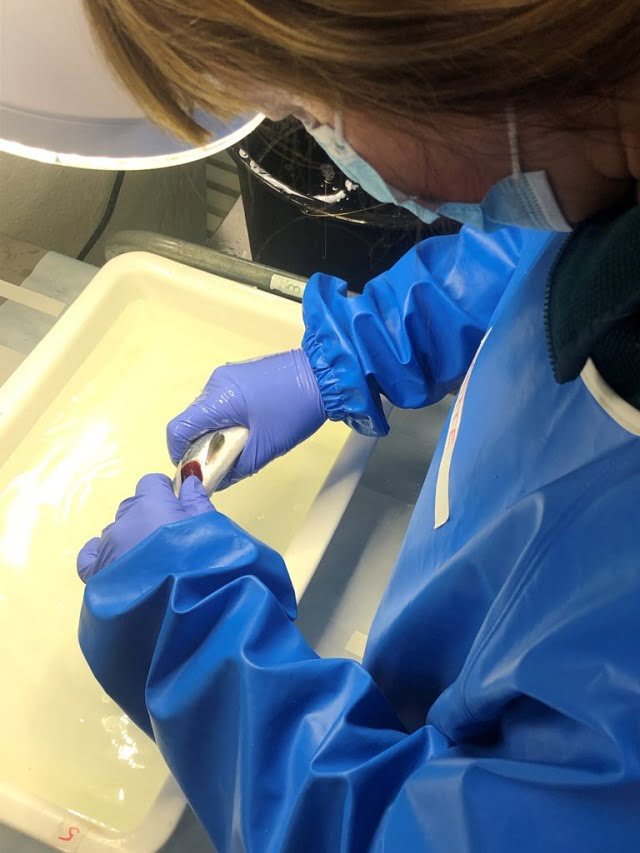by Reidun Lilleholt Kraugerud, Nofima
Scientists have been looking into peracetic acid as an alternative treatment for amoebic gill disease (AGD) in sea-farmed salmon. The initial results were very promising.

The preliminary findings indicated that peracetic acid is not harmful to the salmon, that it has an effect on the amoeba that causes the disease, and that it carries a low environmental risk.
However, when the researchers started treating AGD-affected salmon with peracetic acid in controlled trials, the effectiveness of the treatment was variable, suggesting the treatment is not yet fully ready for use to treat AGD.
Several peracetic acid-based products were tested, at different doses and using different methods of administration.
Effectiveness against AGD is variable
Although the treatment appeared to reduce the parasitic load, it did not kill the amoebas. The scientists also found that microscopic changes in gill tissue continued to develop after conclusion of the treatment.
“We nevertheless believe it is worth continuing our research in this area. The data we have indicates that peracetic acid has potential, but we still need to optimize the treatment,” says Carlo C. Lazado, project manager and senior scientist at Nofima.
The report from the research project has recently been submitted to the Norwegian Seafood Research Fund (FHF).
Widely used in aquaculture
The research has provided a lot of useful knowledge about treatment against AGD using peracetic acid. Peracetic acid is already the most widely used disinfectant in recirculating aquaculture systems in Norway.
The research has been carried out in the Peragill project, funded by FHF. Nofima’s partners in this project have been the Norwegian Veterinary Institute, the Technical University of Denmark (TDU), Quantidoc AS and Lilleborg AS.
“We have made significant progress in understanding the chemistry and biology behind one of the most sustainable disinfectants in aquaculture – peracetic acid. We believe that this knowledge is not only valuable when considering treatment options for gill health issues, but also in connection with other uses of peracetic acid in aquaculture, especially as a routine disinfectant to ensure increased biosecurity in recirculating aquaculture systems,” says Lazado.
About AGD
In recent years, amoebic gill disease (AGD) has become a serious disease among sea-farmed salmon. Farmed salmon affected by AGD are currently treated with fresh water or are bathed in hydrogen peroxide.
About peracetic acid
Peracetic acid is an oxidizing acid that is widely used as a disinfectant in recirculating aquaculture systems for farmed rainbow trout, because it disinfects without harming the beneficial bacteria in the biofilter.
Contact person
Carlo C. Lazado
Senior Scientist
+47 64 97 01 14
carlo.lazado@nofima.no
Editor at the digital magazine AquaHoy. He holds a degree in Aquaculture Biology from the National University of Santa (UNS) and a Master’s degree in Science and Innovation Management from the Polytechnic University of Valencia, with postgraduate diplomas in Business Innovation and Innovation Management. He possesses extensive experience in the aquaculture and fisheries sector, having led the Fisheries Innovation Unit of the National Program for Innovation in Fisheries and Aquaculture (PNIPA). He has served as a senior consultant in technology watch, an innovation project formulator and advisor, and a lecturer at UNS. He is a member of the Peruvian College of Biologists and was recognized by the World Aquaculture Society (WAS) in 2016 for his contribution to aquaculture.
